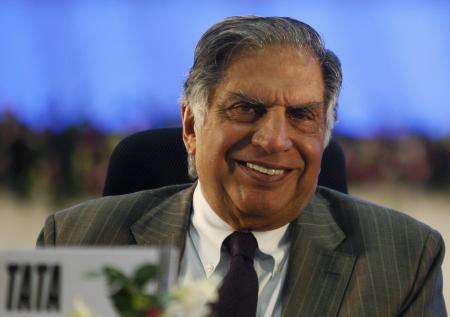
His detractors banked on two things: apart from being shy and reticent, Ratan Tata's career had been undistinguished, with desultory stints in sundry group firms.
Twenty years later, as he prepares to hand over the baton to Cyrus Mistry, all that is a distant memory.
The detractors faded into oblivion in no time, leaving the reluctant king, who once wanted to go back to the US to pursue his first love, architecture, free to drag India's largest conglomerate out of the cosy embrace of its pedigreed but plodding existence.
...

Consider the following to get a sense of Tata's legacy:
Tata Group sales registered a 22 per cent-plus compounded annual growth rate between FY1992 and FY2011.
That's much faster than the nominal growth rate in non-agricultural GDP during this period.
Profit after tax registered a 21.84 per cent CAGR in the same period. For market capitalisation, the figure is 23.52 per cent.
That, however, comes down to 18 per cent, if one excludes Tata Consultancy Services, listed in 2004.
In FY04 (the earliest numbers available), international revenues comprised a quarter of group revenue - this has grown to 58 per cent in FY11.
...
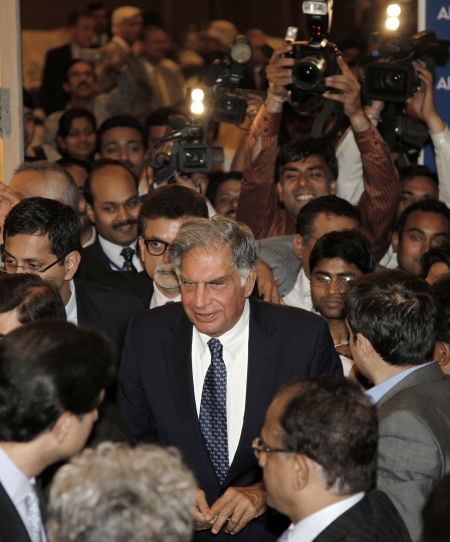
There is more. TCS is Asia's largest software company; Tata Steel is number 10 in the world; Tata Global Beverages is the world's second largest maker of branded tea while Tata Power is India's largest power firm.
In the 2010 Brand Finance Global 500, a ranking of the world's most valuable brands, the Tata name was reckoned to be worth $11.2 billion, placing it first in India and 65th overall.
His crowning glory obviously has been the dramatic pace of acquisitions. Between 1991 and 2003, the group made five purchases; in 2004, it rose to seven; in 2005, to 17; and between 2006 and 2010, there were 36 acquisitions.
...
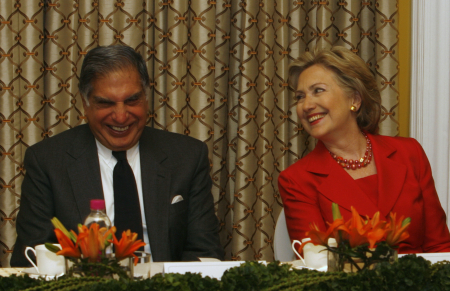
The scale of the acquisitions has also been dramatic: Tata Tea's takeover of iconic UK brand Tetley, a company three times its size, for $450 million in 2000 was then the biggest international takeover by an Indian company.
Since then, it has announced its arrival in the global big league. In 2007, Tata Steel bought Corus, Europe's second largest steelmaker, for $12.1 billion.
A year later, Tata Motors paid $2.3 billion for Jaguar Land Rover.
In between, there were purchases in several emerging markets: Thailand's Millennium Steel, or Singapore's Natsteel, for example.
...
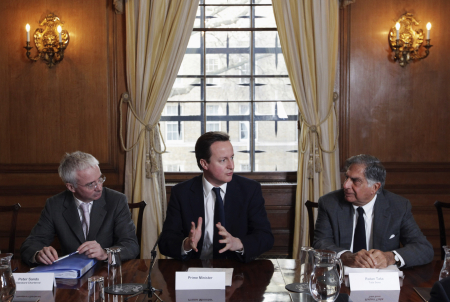
But, the Corus and JLR acquisitions made near the top of the market have led to a significant increase in the group's debt levels (22.62 per cent CAGR between FY92 and FY2011), making several analysts believe the acquisitions may have been mistakes, given that they were paid for by expensive debt.
At last count, the group had a consolidated debt of 1,86,565.32 crore as on March 31, 2011.
But, Tata sympathisers say that's too short-term a view as the real benefits of such moves would be visible only in the long term.
The results have been mixed so far. While JLR has started bringing in profits despite difficult market conditions in Europe, Corus has yet to fully pay itself back.
...

To streamline operations, Tata has shrunk the group to 98 operating companies from an unwieldy 250-plus in 1991.
However, some argue a lot more needs to be done on this front as the group is still heavily dependent on the top three companies - TCS, Tata Steel and Tata Motors - that account for almost 72.43 per cent of sales and 83.57 per cent of PAT of the 31 listed companies in the group.
Tata also has managed to fulfil his uncle's cherished dream by pushing Tata Motors, a commercial vehicle manufacturer (it still retains almost 60 per cent market share), into the passenger car business in the late 1990s.
...

That resulted in the birth of Indica and much later, Nano, which was Tata's brainchild marketed as a safer alternative for families commuting on two-wheelers.
But, the pin-up of frugal engineering has flattered to deceive so far. Only 140,428 Nanos have been sold since sales began in April 2009, well below market expectations and the company's eventual target of one million a year.
The company had said it would sell about 20,000 vehicles a month; however, except for a few months when the 10,000 number was breached, it is nowhere near reaching that number.
...
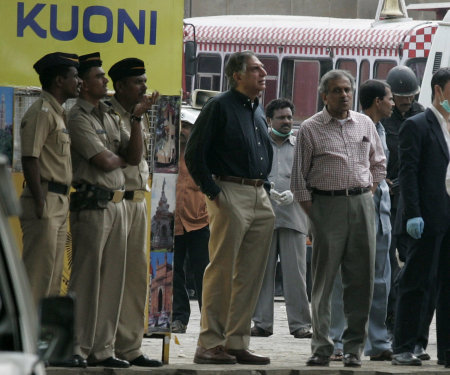
In terms of market share, Tata Motors has remained number three, unable to go ahead of Hyundai except for a few months.
Despite Nano, which was expected to bring in the volumes, the market share of Tata cars has been going down - from 14.6 per cent in 2009-10 to 13.97 per cent in 2010-11 and 13 per cent in April-October this year.
Another Tata disappointment is the way the group's telecommunications business has shaped up.
He has often told his senior managers they should not be in any business where the group is not among the top three.
...
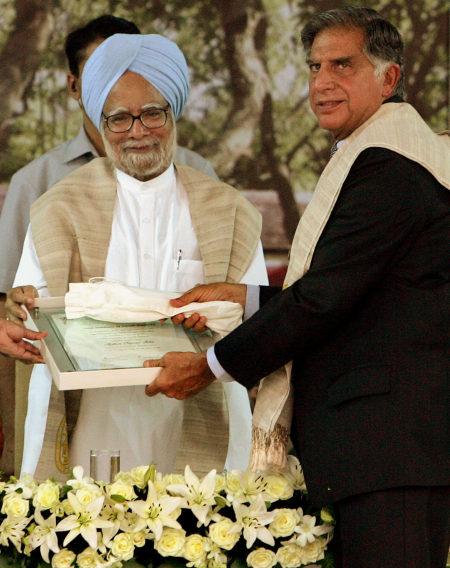
In wireless mobile, however, the group is in the sixth position based on subscriber market share.
Despite its entry into GSM (it was at best a small player in the the CDMA space), its market share has remained virtually stagnant.
For example, the share went up only marginally - from 9.54 per cent in July-September 2006 to 10.68 per cent in April-June 2011.
This is despite having roped in DoCoMo as a partner in November, 2008.
These are obviously some of the sectors where Tata would like to see the record improve.
...
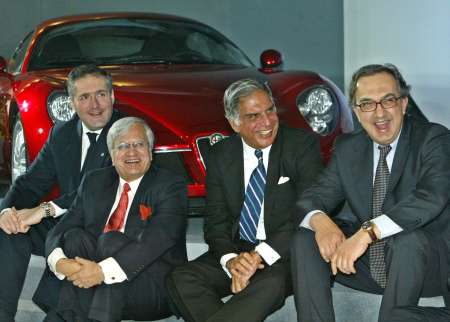
One of Tata's many lasting contributions would be his mission to foster innovation being led by the Tata Group Innovation Forum, a 16-member think tank set up in 2007.
This has led to several initiatives (Nano was only one offspring) such as Ginger hotels - a 30-strong chain of self-service low-cost hotels.
Indian Hotels MD Raymond Bickson says the plan is to take it up to 100.
The group is pursuing innovation on two levels. At the high end, Tata Chemicals is conducting research in nanotechnology and food science, and TCS holds regular innovation conferences in Silicon Valley.
...

But, what has caught more attention is the group's commitment to "frugal innovation": new products designed to appeal to a young, emerging class of Indians with big aspirations but limited means.
For example, scientists in Tata Chemicals' Innovation Centre said if silver nanotechnology was used with rice husk ash, the filters could stop bacteria as well.
Titan Industries, the watch and jewellery company, said with its precision engineering skills it could make the filter switch off on its own once it reached the end of its life.
Thus was born Swach, the world's cheapest water purifier. There's more: small truck Ace and super-computer Eka.
...
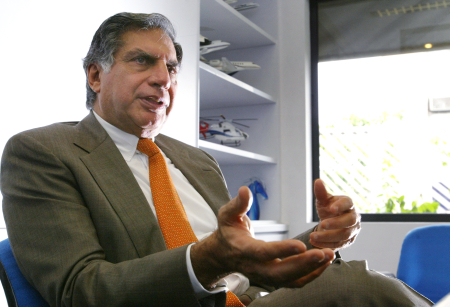
A premium has always been attached to newness in the group. Rallis, for instance, has run a Freshness Index for some years - the percentage of products in its portfolio less than three years old.
To foster innovation, the group has an annual innovation contest in which group companies compete.
And yes, it also has an award for "failed ideas". The idea is to remove the shame of failure from trying out something new at work. The trick seems to be working as the entries are rising very year.
Instances like these show why Cyrus Mistry can rest assured: among many other things, Ratan Tata would leave behind a well-oiled, vibrant workplace. That, clearly, is his biggest contribution to the Tata empire.